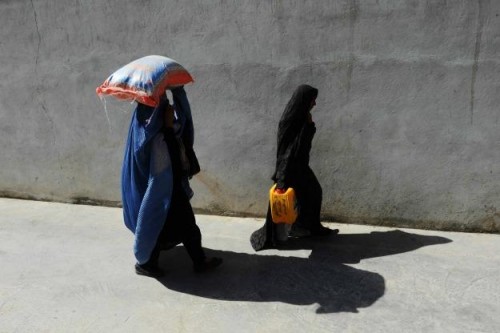Kabul’s ongoing presidential election negotiations aren’t the only dramatic transition underway in Afghanistan. The ambitious U.S.-led “surge” launched in 2009, which bolstered foreign troops mainly in southern and eastern Afghanistan, has given way to a drawdown, paralleling a major downsizing in the development sphere. Aid budgets are contracting, and provincial reconstruction teams (PRTs) and other subnational civil-military installations — long key international platforms to distribute aid and engage local politics outside Kabul — are closing down.
As the local-level foreign official presence phases out of more volatile and remote areas, how should donor assistance strategies adjust? A new paper from the U.S. Institute of Peace, which builds upon fieldwork from the past three years, argues that 2014 marks an important opportunity for donors to recalibrate three central tenets of their subnational governance and development strategy.
First, donors should revise their conceptions of assisting Afghan government “service delivery.” To be sure, delivering services seems commonsensical in a country that sorely lacks them, but PRT-based projects often confused their ambition to cultivate recurring services with their reality of launching a constellation of unsystematic and often one-time projects. The sheer numbers of foreign personnel and agencies operating at the subnational level — all responding to a higher-level focus on “burn rates” — further fueled the disparate character of aid distribution.
Sometimes PRTs even perpetuated confusion on what “basic services” actually were from an Afghan perspective. The international community’s conception often proved maximalist, and Afghan translators admitted to me that they have disagreed over how “basic services” should even be translated. Further confusion surrounded which Afghan government actors were supposed to provide the services, as PRTs often focused on governors’ offices rather than national ministries.
In addition, there are real questions about the theory that PRTs could imbue the Afghan government with long-term legitimacy through short-term project delivery. Counterinsurgency approaches reflected the Western concept of the social contract: If the Afghan state provided goods, it was assumed the Afghan population would offer their loyalty in return. A remote village’s mobilization to express their requests was thus framed — and logframed — as an indicator of success. As a result, donor focus on “service delivery” encouraged popular demand for projects that frequently exceeded historic precedent or local context. But research suggests that once a group of projects was completed, rural communities did not necessarily pledge their unwavering support to the Afghan government — instead they required continuity in the provision of these projects, and often harbored inflated expectations.
Looking to the post-PRT era, donors must revise their approach to service delivery by acknowledging that in the eyes of local populations, questions of politics, justice, and sectoral services are deeply intertwined. They should shift to a more restrained vision of subnational aid delivery that stresses predictability and reliability rather than maximal outputs. Rural Afghans may harbor fairly low expectations for the government’s provision of services — but for certain vital functions, tolerance is now scant for an administration that is missing in action. Donors should further focus on reforming top-down systems and middle-level processes of service delivery rather than inciting bottom-up demand for discrete projects.
This article appeared on the website of Foreign Policy magazine. To read the rest of the article, click here.









1 Comment
If “politics is always local,” how can PRTs help locals influence national politics in Afghanistan? or anywhere in the world? And how can local community development help a community feel empowered to make a difference? These seem to me to be critical questions which are good to address in the abstract but probably difficult to answer for practical application without taking into consideration local conditions, with differences even between nearby communities in the same region of Afghanistan (or anywhere else in the world).